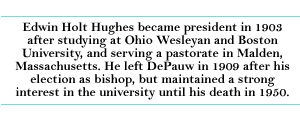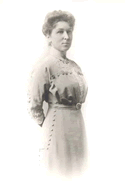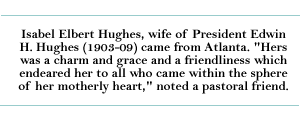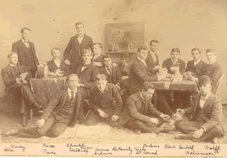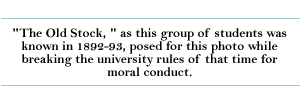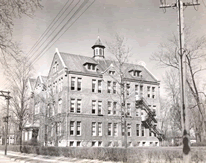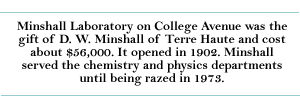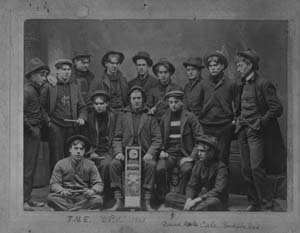
|
Pages:
<< Back 1
2 3 4
5 6 7
8 9 10
Next >>
A
new breed of Methodist ministers was called to the DePauw presidency
in the early 20th century, equally devout but equipped with more
advanced theological education than their predecessors. The three
who followed Gobin in rather rapid succession were Edwin Holt Hughes
(1903-09), Francis J. McConnell (1909-12), and George R. Grose (1912-24),
all graduates of the Boston University School of Theology. There
they had come under the influence of Professor Borden Parke Bowne,
who expounded a Christian philosophy called Personalism, which soon
became a powerful school of thought among Methodist academics. This
philosophy, which was to have an especially long-lasting influence
at DePauw, stressed the unique worth of the human personality and
the working of the "divine will" in all of life.
Partly accounting for all this may have been the rapid rise in university enrollments, which almost doubled during Hughes' presidency, reaching 1000 by 1909, along with putative changes in the social and economic backgrounds of the students. Formerly recruited in large part from families of modest means and rural or small-town origins, the student body now included a growing number of more affluent, city-bred youth, many of whom were ready to rebel against what was perceived as a repressive social and religious atmosphere.
At any rate the young president took firm measures to restore campus
order, even going as far as to patrol the local saloons from time to
time on the lookout for students breaking the anti-drinking rule! He
halted the practice of declaring frequent holidays from classes to
celebrate athletic victories or similar events. Using his personal
popularity with students to promote campus religious observance
without resorting to the former emphasis on compulsory attendance,
he initiated a monthly Sunday afternoon university service which
attracted a large attendance.
_________________________________________ Hughes also spoke out strongly against the practice of celebrating Washington's birthday on February 22 each year by the traditional freshman-sophomore class scrap. These battles over possession of the opponents' flag or the Columbian Boulder in front of East College had grown increasingly violent in recent years, often causing serious injuries to students taking part in them. He used his presidential authority to call off the 1907 scrap and in its place in the fall substituted a new all-campus celebration featuring a morning chapel service, a milder version of the freshman-sophomore confrontation, several interclass athletic contests, and in the afternoon the Earlham-DePauw football game. The newly organized university band played, a great bonfire was lit after the football victory, and Hughes himself presided over an evening of "jollification" in Meharry Hall on this first Old Gold Day. Not long afterwards, the women students, feeling left out of much of the Old Gold Day activities, organized their own May Day festivities, with elaborately costumed dancing around a May pole, the election of a Queen of the May, tennis matches on the East College lawn, and theatrical entertainments in the evening. Both became annual campus events, May Day eventually giving way to Mothers' Day Weekend and Old Gold Day surviving to the present as alumni homecoming.
On
the financial side, President Hughes managed to end the annual deficits.
In effecting this he had the help of Salem B. Town, an Asbury alumnus
and former minister of the College Avenue Methodist Church whom
he persuaded to become the university's first full-time financial
officer in 1905. Town not only put the institution's books in order
but proved to be an energetic fundraiser. Methodist businessman
Melvin Campbell of South Bend also played an important role
in bringing the university back to financial stability by creating
a sustaining fund from contributions of alumni and others that brought
in about $45,000 over five years. Another $35,000 was added to the
endowment with the final settlement of the affairs of the defunct
DePauw College for Women in New Albany in 1907. During the Hughes
administration the university's total endowment more than doubled,
rising from $231,000 to $530,000.
______________________________ |
Depauw University e-history | E-mail comments to: archives@depauw.edu

